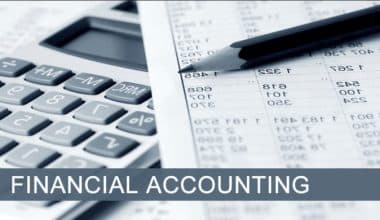Many individuals may have little or no interest in topics relating to their interests. As a result, they get nervous when in or about to start a discussion relating to financial phrases and or clichés. However, if you run a company that lends credit, knowing how to determine interest rates and how they influence your business is critical. Hence, there are two types of interest rates: nominal and effective annual interest rates. While the compounding period is not taken into account in the nominal interest rate, the EAR, on the other hand, considers the compounding time and thus provides a more realistic representation of interest payments. In this post, we will cover, how you calculate it, the EAR calculator, the formula, and which account has the highest Effective Annual Interest Rate.
If you are in the above pot, worry less as this piece is specially designed for You. Have fun reading…
What is Effective Annual Interest Rate?
An annual effective interest rate, which is the same term as the annual equivalent rate, effective rate, and effective interest rate, is the actual return on a savings account or any other interest-paying investment when the compounding effects over time are taken into account. It is the yearly rate of interest that an investor can receive or pay after compounding.
When you generate or earn interest on an investment or maybe you pay one on a loan as a result of compounding interest over time, such interest is your Effective annual interest rate. Generally, the EAR is always higher than the nominal rate or APR. Likewise, you can use it to compare different financial products with varying compounding periods; weekly, monthly, yearly, and so on.
However, when there is an increase in the number of compounding periods, the effective interest rate rises over time.
Understanding Effective Annual Interest Rate
The effective annual interest rate is the genuine interest rate that correlates with an investment or loan. Meanwhile, the effective annual interest rate’s most essential feature is that it accounts for the fact that many regular compounding periods result in a greater average annual return. It’s the formula you use to figure out how much money you make on the credit you give your clients. Or how much money you owe your creditors in actual terms.
Typically, without a doubt, the nominal and effective rates of return frequently diverge. However, this is due to the fact that interest calculation (compounded) is strictly based on monthly, bi-monthly, semi-annually, or annually.
Assume you have two loans, each with a stated interest rate of 10%, one compounding annually as well as the other compounding twice a year. Even if they both have a stated interest rate of 10%, the loan that accumulates twice annually will have a massively higher annual interest rate.
However, borrowers may understate the fees of a mortgage if they don’t know the effective annual interest rate. Investors in their quest require it in order to forecast the real rate of return you are expecting on investment; a bond fund, for example.
Effective Annual Interest Rate Calculator
Generally, the effective annual interest rate, or EAR calculator, is a useful tool for calculating the effective annual rate of an investor’s investment or a loan.
How does the Effective Annual Interest Rate Calculator work?
To use the EAR calculator, you need to set and take note of the below variables. Once you set these parameters and apply them using the effective annual interest rate calculator, the results will appear instantaneously.
- Annual Interest Rate: the nominal interest rate for a year.
- Periodic Interest Rate: A periodic rate is a rate that a lender charges or that a borrower pays each period. The term “effective annual interest rate” calculator refers to the frequency of compounding, which is the same as the payment period.
- Compounding Frequency: the number of times in a year that compounding takes place.
- EAR is the short form of Effective Annual Effective Rate.
- Term
- The original or actual balance
Which Account has the Highest EAR?
A. Account 1. An account with a pay of 8% nominal interest with monthly compounding.
B. Account 2. An account paying 8% nominal interest with annual compounding.
C. Account 3. An account paying 7 percentage nominal interest with daily (365-day) compounding.
D. Account 4. An account with a 7% nominal interest pays with monthly compounding.
E. Account 5. An account paying an 8% nominal interest with a daily (365-day) compounding.
How to Calculate Effective Annual Interest Rate
Follow these procedures to compute the effective annual interest rate using the EAR formula:
#1. Find Out What the Specified Interest Rate Is
The specified interest rate, or the annual percentage rate or nominal rate, appears in the loan or deposit agreement’s headlines. Let’s take the annual rate of 36 percent and monthly interest charges, as a case study.
#2. Determine How Many Compounding Periods There Will Be
Generally, compounding occurs on a monthly or quarterly basis. It could be in the space of 12 months (365 days in a year) or 4 months for quarterly compounding (approximately 4 quarters in a year).
#3. Adopt and Utilize the Effective Annual Interest Rate Following Formula
Basically, the effective annual interest rate formula : EAR = (1+ i/n)n – 1
- n = Compounding periods
- I = Stated or specified interest rate
Basically, there are two elements to the equation we can use to calculate the effective annual interest rate using the EAR calculator:
n: the number of compounding periods
I: the specified interest rate (APR)
Before you punch in and calculate your effective annual interest rate and compounding periods, here’s how the equation may look:
EAR = (1 + i/n)n – 1
To Calculate Effective Annual Interest Rate for credit cards
You may observe how your APR and EAR change when viewed through the lens of a credit card balance. In order to calculate the effective annual interest rate of a credit card with an annual rate of 36% and interest charged monthly:
Specified interest rate: 36%
The number of compounding periods: 12
Therefore, EAR = (1+0.36/12)^12 – 1 = 0.4257 or 42.57%.
To Calculate Investment Effective Annual Interest Rate
Putting into consideration EAR refers to the money an investor receives on investment, this nevertheless works much the same way. For instance, let’s look at the following two options:
An investor receives a monthly compounded interest of 10% on Investment A while Investment B pays 10.1 percent semiannually compounded. Which one of these two options will come out as the bigger bargain?
Basically, the specified interest rate for both circumstances is the nominal interest rate. Hence, we derive the effective annual interest rate by multiplying the nominal interest rate by the number of compounding periods the financial product will go through in a given time period. In this illustration, we decide to use the term “one year.” With that in mind, we can now go to the following formula to calculate and find out the effective annual interest rate:
EAR = (1 + (i / n)) ^ n – 1
- Investment A, the result will be : 10.47% = (1 + (10% / 12)) ^ 12 – 1
- While for investment B, it will come out : 10.36% = (1 + (10.1% / 2)) ^ 2 – 1
Although from the above calculations, investment B has a higher stated nominal interest rate, its effective annual interest rate is lower than that of investment A. This, however, is due to the fact that investment B compounds less frequently during the year. In a circumstance whereby an investor invests $5 million in one of these ventures, such an investor will lose more than $5,800 every year if they make the wrong pick.
Difference Between APR and EAR
APR, or annual percentage rate, covers different aspects and focuses beyond mere interest by revealing the full cost of borrowing money. When you invest in real estate, for instance, the APR encompasses both the fees you pay to get the loan and the interest you’ll pay. Nevertheless, the APR does not account for interest compounding.
The effective annual interest rate, on the other hand, considers the consequences of interest compounding.
Annual Percentage Rate
Although there are numerous meanings for APR, we’ll use the term to refer to the nominal interest rate. Simply said, this is the annual interest rate multiplied by the number of payment periods in a year. If a credit card costs 1% interest each month, multiplying that by 12 provides a nominal annual percentage rate of 12%.
The Truth in Lending Act dictates how APR is calculated in the United States. APR includes any fees that are integrated into the loan’s principal balance under these criteria.
Effective Annual Interest Rate
Effective APR tends to take compound interest into consideration and is important for analyzing loans that compound interest on a regular basis, such as daily and monthly. While the nominal APR for a credit card costing 1% interest per month is 12 percent, as in the APR explanation. Nonetheless, that interest or return will go to your balance every month. As such, there will be an interest charge on any outstanding interest charges but that’s in the following month. In reality, most credit cards charge daily interest.
How Important Is the Effective Annual Rate to Businesses?
Generally, the effective yearly interest rate is a useful tool for determining a loan’s interest expense and analyzing the real return on investment. Hence, borrowers must have a thorough awareness of the cost of debt and how it affects their company’s financial performance and stability.
However, a higher interest expense reduces a company’s payout ratio, which may limit its capacity to service future debt. Furthermore, the increased interest payment will reduce the company’s net profit and sustainability.
Investors, on the other hand, will stand to profit and benefit if the effective cost is greater than the issuer’s nominal rate. They also utilize this rate to analyze and compare different investment portfolios across varying periods of compounding. This nevertheless helps in a great way in the process of making an informed decision and or selection.
Conclusion
The effective annual interest rate is a crucial metric for determining the genuine return on an investment or the true interest rate on a loan.
However, due to the effects of compounding, the quoted nominal interest rate and the effective interest rate can differ dramatically. Nevertheless, the effective interest rate is crucial when choosing the best loan or deciding which investment delivers the best return.
In addition, the EAR is always higher than the indicated annual interest rate when compounding.
FAQs
Why is effective annual interest rate important?
converting the nominal annual rate to the effective annual rate (EAR) is a great way to evaluate the effective values of various loans or return rates on kinds of investments when compounding differences.
Why isn’t the effective annual interest rate used by banks?
The reported interest rate is used instead of the effective yearly interest rate when banks charge interest. This is done to provide the impression that the consumer is paying a reduced interest rate.
How Does Compound Interest Work?
On a loan or deposit, compound interest is calculated on the initial principal plus all accumulated interest from previous periods. When computing compound interest, the amount of compounding periods makes a big effect.
What is the definition of a nominal interest rate?
A nominal interest rate does not include any fees or interest compounding. The rate is frequently cited by financial institutions.
Related Articles
- ANNUAL PERCENTAGE YIELD: Definition, Formula, & Calculator
- EFFECTIVE ANNUAL YIELD: Definition, How to Find EAY Formula & Calculator
- ANNUAL INCOME: Definition and Calculations of Gross, Net & Total Annual Income
- What Is Annual Percentage Yield: Definition, Calculation & How It Works
- Project Scope Management: Definition & Scope Management Plan Examples






